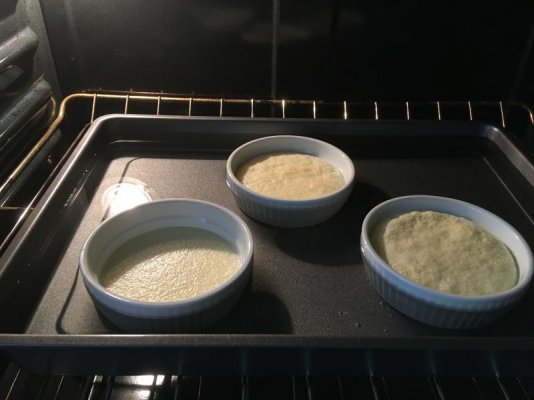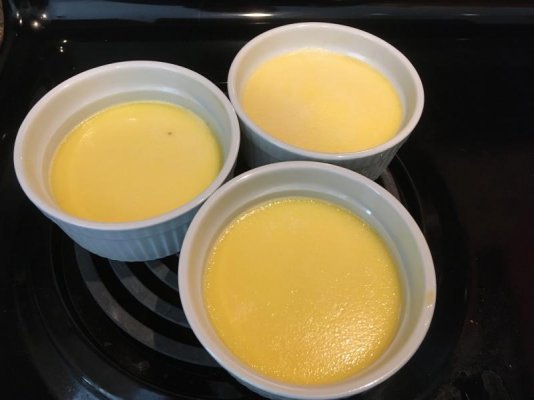Often times, instructions are vague. Mixing, and beating can mean different things. You mix together a pancake batter doe instance. But that means mixing with a whisk, or spoon, leaving small lumps in the batter. Often time mixing together eggs and milk, to use for scrambled eggs, or as an egg wash is done with a fork. To mix until pale, simply means to make sure that the egg is completely blended together until smooth and uniform. It doesn't mean to use an electric mixer. As yo said, you don't want to whip air into the custard,u nless you are trying to make a mouse, or souffle.
Also, think about what you are making. Basally, you are making a Creme Patisserie in a ceramic ramekin, with a has caramel costing on top. Ceramic is an insulator, and doesn't absorb, or give up heat readily. That being said, once it is hot, it tends to maintain a steady temperature which helps it cook foods more evenly. But as with all insulators, it will develop not spots, as heat will not readily distribute itself throughout the material. If the water bath that the ramekin sitting in rises 2/3rds of the way up the vessel, the top 3rd, will be hotter than the lower third, as the water can not rise above 212 degrees F. The air temp in the oven can get hotter, and the top third of the ramekin will absorb that heat. Therefor, the top half of the custard will be more firm than the bottom 2/3rds of the custard. Also, the jiggle test works because of the latent heat if both the ceramic material, and the hotter outside portion of the custard. That latent heat will continue to cook the not fully cooked custard center when the ramekins are removed from the oven. If the custard was baked until the center was firm, the outer layer of custard would be overcooked, and not pleasant. The brulee part of creme brulee is browning of the sugar crystals on top with a kitchen torch, on top of the custard.
Think about the physical properties of the materials, and foods that you are working with. It will make you a better cook, whether it be with proteins, pastries, veggies, barbecue, or any other kind of cooking/food preparation. A little physics and chemistry goes a long way in understanding how to prepare food. I mean, it works for both Chef Longwind of the North (me), and for Alton Brown.
Seeeeeya; Cnief Longwind of the North
Seeeeeya; Chief Longwind of the North


